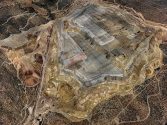“Pride of Place at NOMA,” Art e-Walk
Over the years, Arthur Roger nurtured artists through his art gallery opened in 1978 and in doing so, helped shape and promote the art scene of his native city. Joining the list of benefactors, he recently gifted his sizable art collection accumulated over four decades to the New Orleans Museum of Art. The eighty-seven objects, including paintings, sculptures, videos, photographs, are on display this Summer for the exhibition Pride of Place: The Making of Contemporary Art in New Orleans, curated by Katie Pfohl, Curator of Modern and Contemporary Art at NOMA.






